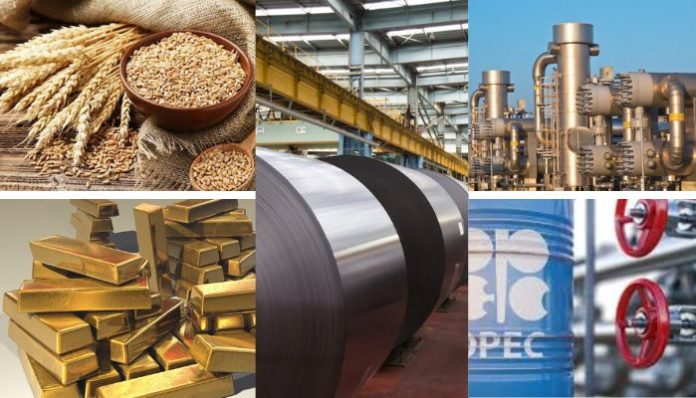Top Commodities That Attract Big Investors From Gold to Crude Oil
In the world of finance, commodities trading has long been a magnet for big investors seeking to diversify portfolios, hedge against inflation, and capitalize on global demand. From the shine of gold to the strength of crude oil, commodities are physical assets that hold intrinsic value. But what makes these markets so appealing, and which commodities consistently attract the biggest players? Let’s explore the top commodities that draw significant institutional interest and why they remain investor favorites.
Why Big Investors Turn to Commodities?
Commodities offer several advantages for institutional and high-net-worth investors. First, they serve as a natural hedge against inflation especially during times of economic uncertainty. Second, the global demand for essential resources such as energy and food, ensures that commodity markets remain liquid and relevant. Ultimately, commodities often exhibit a low correlation with traditional assets such as stocks and bonds making them a valuable addition to a well-balanced portfolio.
Let’s now break down the top commodities that continue to dominate investor interest.
1. Gold – The Timeless Safe Haven
For centuries, gold has represented stability and prosperity across civilizations. In modern finance, it serves as a store of value, particularly during economic downturns, geopolitical crises, or inflationary periods. Hedge funds and central banks often boost their gold reserves to help reduce overall portfolio risk and maintain stability during market volatility.
In addition to physical gold like jewelry and bullion, investors also trade gold through futures, exchange-traded funds (ETFs), and digital platforms offering tokenized gold. Its liquidity, stability, and universal appeal keep it firmly at the top of the commodity ladder.
2. Crude Oil – The Lifeblood of the Global Economy
Crude oil drives key sectors like transport, manufacturing, and aviation. Its price shifts can greatly impact the global economy making it a vital asset for energy-focused investors and sovereign funds.
Investors monitor oil inventories, OPEC decisions, geopolitical tensions, and currency fluctuations to guide their trades. The volatility in oil prices creates opportunities for both speculative gains and hedging strategies, making it one of the most actively traded commodities.
3. Natural Gas – The Underrated Energy Asset
While often overshadowed by oil, natural gas is increasingly gaining traction due to the global push for cleaner energy. It’s a major fuel source for heating, electricity generation, and industrial use.
With the rise of liquefied natural gas (LNG) exports and global energy diversification, natural gas markets are expanding in scale and complexity. For investors seeking exposure to energy commodities without the same price swings as oil, natural gas presents a compelling opportunity within the commodities trading space.
4. Silver – The Industrial Precious Metal
Silver holds a distinctive position as both a precious metal and a key industrial resource. It’s used in electronics, solar panels, batteries, and medical devices, making its demand highly dependent on both consumer and industrial trends.
Investors often treat silver as “gold’s more volatile cousin,” offering higher potential returns during bull markets. It also acts as a portfolio hedge, especially for investors seeking a mix of inflation-resistant assets and exposure to industrial expansion.
5. Copper – The Economic Barometer
Copper is often seen as a key gauge of global economic activity because of its broad application in sectors like construction, electronics, transportation, and manufacturing. A rise in copper demand usually signals an expanding economy.
Institutional investors closely track copper prices, especially when analyzing emerging market growth or major infrastructure projects. As the world shifts toward green energy and electric vehicles (EVs), copper’s importance is only growing solidifying its place in long-term commodities trading strategies.
6. Wheat – A Staple in Agricultural Commodities
Wheat is a cornerstone of the global food supply, and disruptions in wheat production due to weather, war, or trade policies can trigger price surges. Countries with large populations rely heavily on wheat imports, making it a key geopolitical commodity.
Big investors are increasingly turning to agricultural markets like wheat to gain exposure to food security themes. With climate change and geopolitical shifts affecting crop yields and supply chains, wheat remains a strategic bet in global commodities portfolios.
7. Soybeans – Fueling Both People and Industry
Soybeans are not just a food crop they’re a key input for livestock feed, biofuels, and industrial products. Demand from countries like China and innovations in plant-based food products have made soybeans a commodity to watch.
For investors, soybean markets offer opportunities influenced by global diets, bioenergy policy, and even currency fluctuations. Futures contracts and ETFs make soybean exposure accessible within broader commodities trading plans.
8. Lithium – The Battery Metal of the Future
Though not yet as widely traded as traditional commodities, lithium has seen explosive interest due to its role in powering electric vehicles, smartphones, and renewable energy storage. With countries racing to build EV infrastructure and battery plants, lithium demand is skyrocketing.
Institutional capital is flowing into lithium mining stocks, ETFs, and long-term supply deals. As ESG (Environmental, Social, and Governance) investing becomes mainstream, lithium’s role in clean energy solutions makes it one of the most promising emerging commodities.
Conclusion
From traditional safe havens like gold to emerging stars like lithium, the commodities trading landscape is rich with opportunity. Big investors are drawn to these markets not just for their potential returns, but also for their ability to diversify and protect wealth across economic cycles.
With inflation, global tensions, and shifting energy landscapes making daily news, commodities continue to stand out as a strong and reliable asset class. Whether you’re managing a multi-million-dollar portfolio or exploring your first commodity investment, understanding what draws the biggest players can provide valuable insights into how to build your strategy.
Disclaimer:
https://app.box.com/integrations/officeonline/openOfficeOnline?fileId=1898822516711&sharedAccessCode= & not a trading advice
Disclaimer:
This blog is intended for general informational purposes only and is not trading advice. While we have taken care to source this information from what we believe to be reliable and authentic sources, we make no guarantees regarding its accuracy, completeness, or timeliness. Readers are encouraged to independently verify the information and consult with local regulatory authorities or qualified legal advisors to ensure compliance with current laws and regulations in their jurisdiction. We do not accept any liability for losses or damages resulting from reliance on the content of this blog. Online trading involves risk, and it is essential to understand those risks before participating.


















